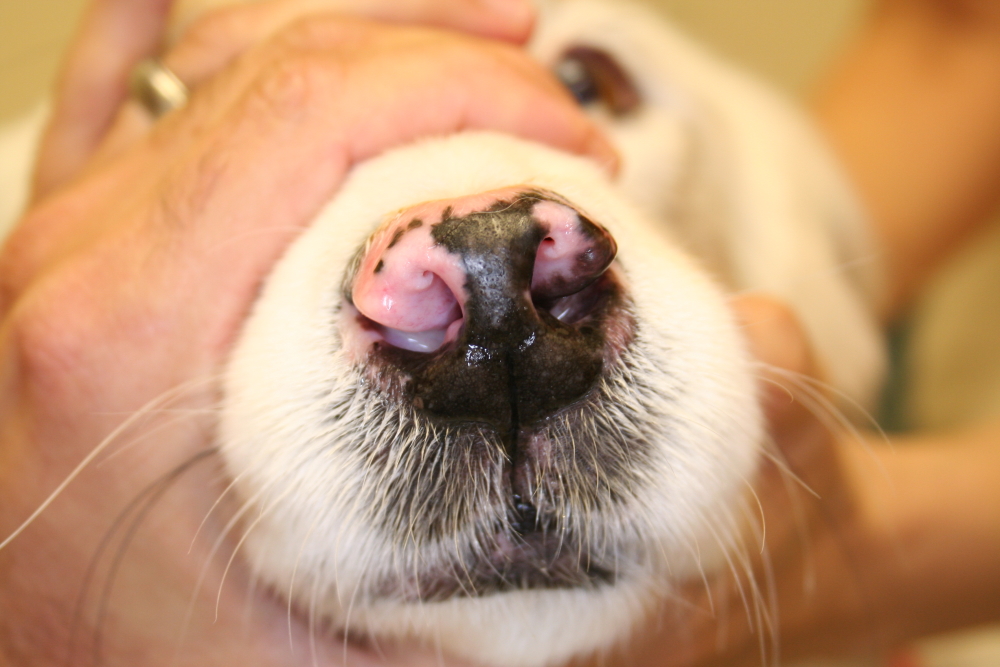Derm Spotlight: Discoid Lupus Erythematosus
What is Discoid Lupus Erythematosus (DLE)?
Discoid lupus erythematosus (DLE) is one of the most common autoimmune skin diseases that targets the face. An autoimmune disease is where your own immune system is reacting against you. This disease can occur in dogs and is rarely seen in cats.

A DLE patient with depigmentation on the nose
What are the symptoms of DLE?
This disease typically causes localized lesions like erosions, ulcers, and depigmentation on the face. Common areas for lesions include around the eyes, mouth, ears, and nasal planum. Rarely this disease can cause lesions on the paw pads and genitalia.
Who is at risk for DLE?
Predisposed breeds include German Shepherd, collie, Siberian husky, and Shetland sheepdog; however, it can occur in any breed. Dogs of all ages can develop this.

Patient has depigmentation and ulcerations on the nose. There are skin changes around the eyes as well.
How is DLE diagnosed?
Biopsy and histopathology are required for a definitive diagnosis.
How is DLE treated?
Management of this disease requires immune modulating medications, which can include topical and systemic therapies. Topical therapies include tacrolimus and corticosteroids. Systemic therapies are drugs that spread throughout the body to treat cells wherever they may be. Systemic therapies include tetracycline-niacinamide combination, glucocorticoids, and modified cyclosporine.
It is also important to apply sunscreen on affected areas to prevent UV radiation which can worsen lesions. Long-term rechecks are required to monitor this disease and may include laboratory tests (e.g., blood work). Monitoring for any secondary skin infections is important as well.
What is the prognosis of DLE?
Patients with this disease typically do well with appropriate treatment. Lesions may wax and wane. Rarely DLE can transform to a malignant skin cancer called squamous cell carcinoma.
If you think your pet may have skin problems and needs further evaluation by one of our dermatologists please call us.
References:
1. Miller WH, Griffin CE, Campbell KL: Muller and Kirk’s Small Animal Dermatology. , 7th ed. St Louis: Elsevier 2013.
2. Olivry T, Linder KE, Banovic F. Cutaneous lupus erythematosus in dogs: a comprehensive review. BMC Vet Res. 2018 Apr 18;14(1):132. doi: 10.1186/s12917-018-1446-8. PMID: 29669547; PMCID: PMC5907183.
- Jan, 30, 2023
- Allergy News, Disease Spotlight


